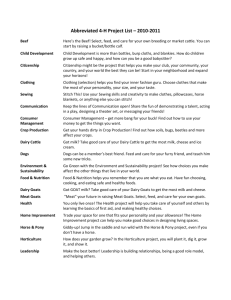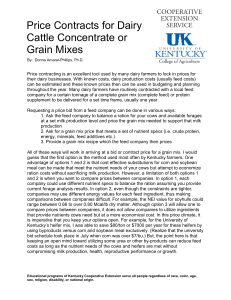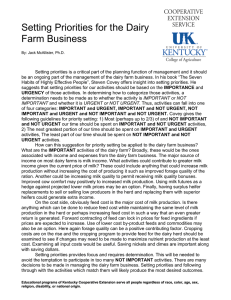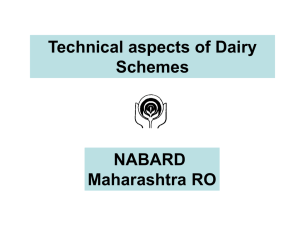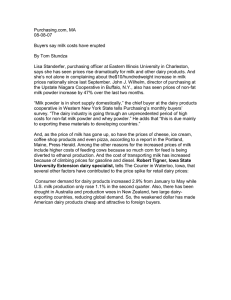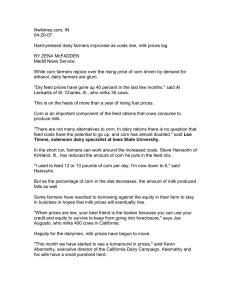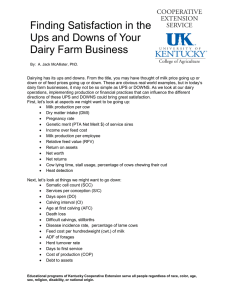A Business Management Look at Higher Feed Costs
advertisement
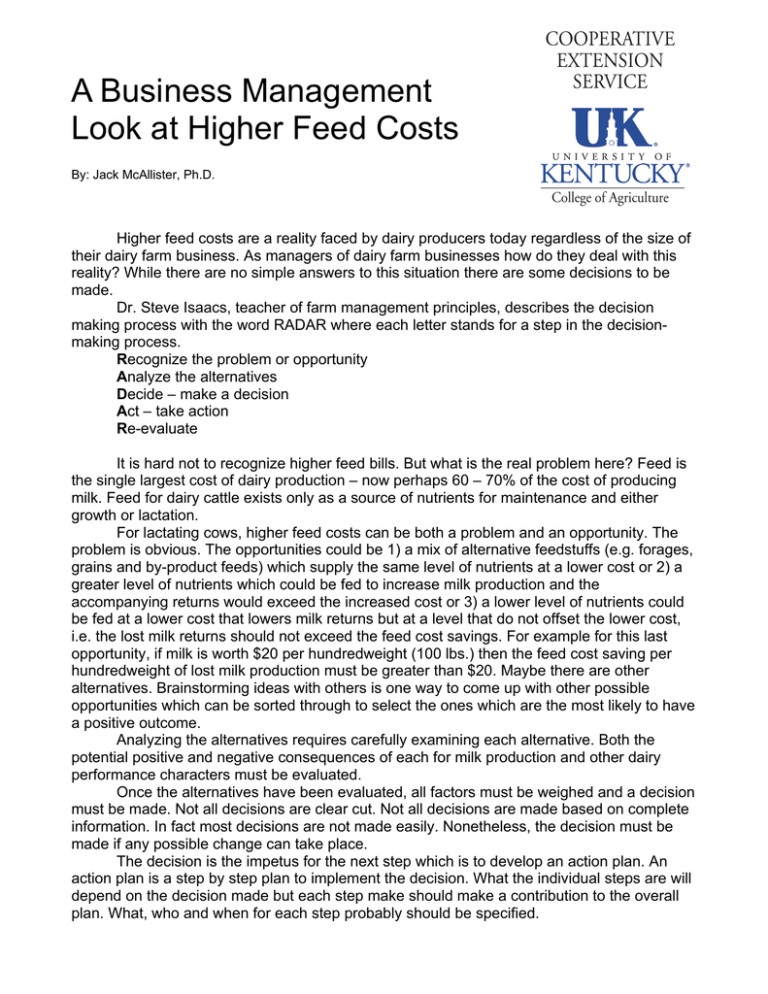
A Business Management Look at Higher Feed Costs By: Jack McAllister, Ph.D. Higher feed costs are a reality faced by dairy producers today regardless of the size of their dairy farm business. As managers of dairy farm businesses how do they deal with this reality? While there are no simple answers to this situation there are some decisions to be made. Dr. Steve Isaacs, teacher of farm management principles, describes the decision making process with the word RADAR where each letter stands for a step in the decisionmaking process. Recognize the problem or opportunity Analyze the alternatives Decide – make a decision Act – take action Re-evaluate It is hard not to recognize higher feed bills. But what is the real problem here? Feed is the single largest cost of dairy production – now perhaps 60 – 70% of the cost of producing milk. Feed for dairy cattle exists only as a source of nutrients for maintenance and either growth or lactation. For lactating cows, higher feed costs can be both a problem and an opportunity. The problem is obvious. The opportunities could be 1) a mix of alternative feedstuffs (e.g. forages, grains and by-product feeds) which supply the same level of nutrients at a lower cost or 2) a greater level of nutrients which could be fed to increase milk production and the accompanying returns would exceed the increased cost or 3) a lower level of nutrients could be fed at a lower cost that lowers milk returns but at a level that do not offset the lower cost, i.e. the lost milk returns should not exceed the feed cost savings. For example for this last opportunity, if milk is worth $20 per hundredweight (100 lbs.) then the feed cost saving per hundredweight of lost milk production must be greater than $20. Maybe there are other alternatives. Brainstorming ideas with others is one way to come up with other possible opportunities which can be sorted through to select the ones which are the most likely to have a positive outcome. Analyzing the alternatives requires carefully examining each alternative. Both the potential positive and negative consequences of each for milk production and other dairy performance characters must be evaluated. Once the alternatives have been evaluated, all factors must be weighed and a decision must be made. Not all decisions are clear cut. Not all decisions are made based on complete information. In fact most decisions are not made easily. Nonetheless, the decision must be made if any possible change can take place. The decision is the impetus for the next step which is to develop an action plan. An action plan is a step by step plan to implement the decision. What the individual steps are will depend on the decision made but each step make should make a contribution to the overall plan. What, who and when for each step probably should be specified. Implementation of the action plan should proceed in a straightforward manner. Because change is anticipated, outcomes and performance need to be monitored. In fact, reevaluation based on performance can form the basis for the next decision to be made. Maybe with a good outcome, the next one will be easier to make. Educational programs of Kentucky Cooperative Extension serve all people regardless of race, color, age, sex, religion, disability, or national origin.


